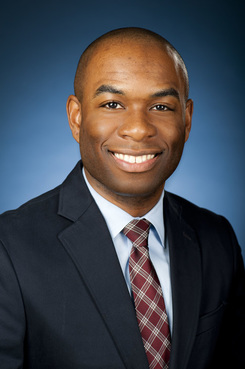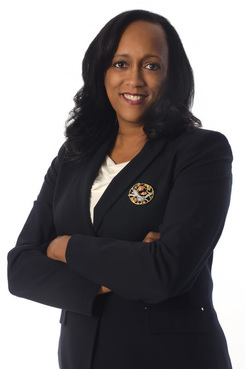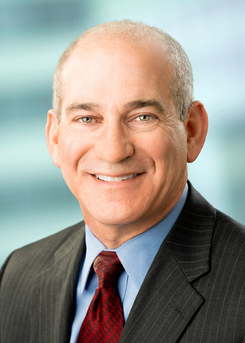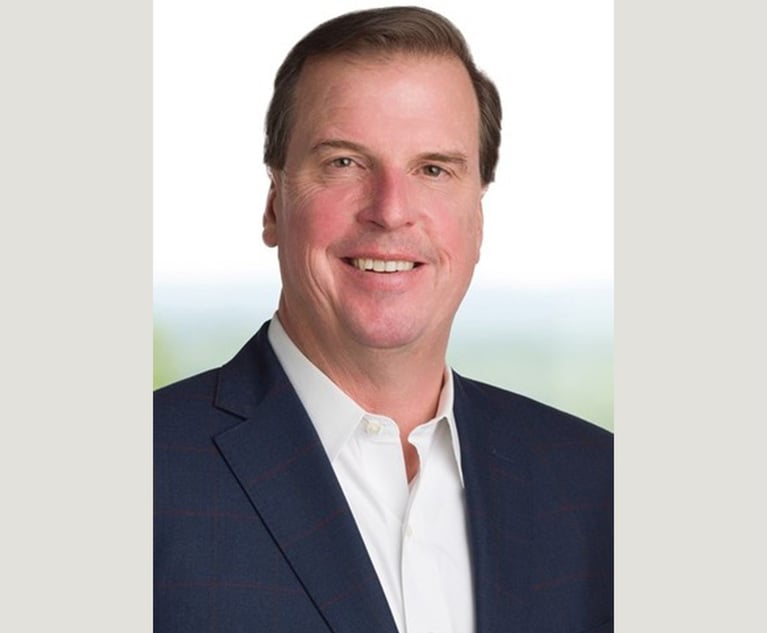Diversity More Than Numbers Game, But Midsize Law Firms Must Play to Win
Creating a firm environment that truly prioritizes diversity means more than hitting a magic number or following an exact formula, attorneys at New Jersey midsize firms have said.
February 07, 2018 at 12:17 PM
7 minute read
 Lloyd Freeman
Lloyd Freeman The numbers are telling. Reports issued over the course of the year indicate that law firms could do far better when it comes to building their diverse attorney ranks. And it might seem that midsize and small firms are at a disadvantage when competing for diverse talent with larger firms—particularly in New Jersey, where the New York and Philadelphia markets loom large.
But creating a firm environment that truly prioritizes diversity means more than hitting a magic number or following an exact formula, attorneys at New Jersey midsize firms have said. The key, it seems, is being proactive, partnering with bar groups and other organizations that can help, and being persistent in a field where one's practice obligations alone can be more than a full-time job.
“Diversity is when you count people; inclusion is when you make people count,” said Lloyd Freeman, a partner at Haddonfield's Archer & Greiner, where he heads a firm affinity program he helped found, “Lawyers Encouraging Archer's Diversity” (LEAD).
An effective diversity initiative must develop rainmakers and retain them—lawyers who “end up eventually being in firm management,” said Freeman, the current president of the Garden State Bar Association, which represents African-American attorneys in the state.
Archer & Greiner, in tandem with the GSBA and Panasonic Corp., recently launched a program creating an eight-week paid summer associate position, to be filled by a diverse candidate who would spend half the term at the firm and the other half at Panasonic.
“It's just another of these mechanisms” to improve diversity in the legal industry, Freeman said, noting that Archer & Greiner also has engaged Rutgers Law School and the Philadelphia Diversity Law Group in connection with those efforts. “We can kind of mold their careers from the very beginning.”
 Tracey Salmon-Smith
Tracey Salmon-Smith Indeed, recruiting and retention are the pillars, and each is challenging for different reasons, said Tracey Salmon-Smith, a litigation partner and, since last year, the chairwoman of the Diversity and Inclusion Committee at 180-lawyer Bressler, Amery & Ross, based in Florham Park. The 11-member panel includes partners and associates, and each of the firm's six offices are represented.
“It's something that's hard to measure because you're not trying to go on pure numbers,” Salmon-Smith said. “Sometimes people run into trouble when they start to talk about numbers. You don't want a body here just because they fill a certain demographic. … That doesn't help anybody.”
In 2017, Salmon-Smith approached Bressler Amery's managing partner, Brian Amery, about joining the committee, which “sends a message to the other lawyers at the firm that this is an important committee,” she said. “He readily agreed.”
Messaging is one thing, but actually doing the work of improving diversity requires much more than meetings. Recruiting efforts at Bressler Amery involve connecting with the law school at Howard University in Washington, D.C., a historically black institution, the National Black Law Students Association, and the New York City Bar Association, which has a diversity fellowship program. As for retention, the firm sponsors and otherwise gets involved with organizations supported by law schools and firm clients, such as NJ LEEP, a Newark-based group seeking to open college opportunities for low-income youths, and the Newark Boys Chorus School, through an annual “Lawyers Leading the Way” fundraiser.
On the whole, the firm has had “some success,” and ”our clients seem to be happy with our progress in this area,” she said. Law students are “doing the research,” Salmon-Smith said. “They're looking at and questioning that the law firm they go to is an inclusive environment.” At the partner level, however, “we weren't getting a lot of traction on our own,” so the firm engaged Ron Jordan of Carter-White & Shaw, a Maryland-based legal search firm focused on placing diverse attorneys.
Jordan, reached by phone, said there are attorneys of color at every level looking for a position, or looking to change positions, and challenged the notion that scarcity of diverse candidates negatively impacts recruiting efforts.
“Law firms, whether they're Am Law 100 or 200, or midsize … they all go to the same well,” Jordan said. “They have no conception of developing relationships with law schools.”
Some historically black institutions, such as North Carolina Central University School of Law, are neglected in firm recruiting efforts, he said.
Salmon-Smith acknowledged that small and midsize firms “definitely have a little harder struggle” than large firms, but it's “not an impossible struggle.”
“It is a struggle, but you've got to get out there and recruit,” she added.
 Alan H. Zuckerman
Alan H. Zuckerman Flaster/Greenberg, a 50-lawyer firm based in Cherry Hill, has done more with its diversity programs in recent months, and doesn't see itself as trailing in the competition for diverse candidates, according to its managing partner, Alan Zuckerman.
“I don't think our size has been a disadvantage. I think our size provides opportunities that all candidates would find different and attractive”—chiefly more significant experience more quickly, opportunity to advance and direct contact with clients, Zuckerman said.
As for compensation, “we tried to stay competitive with the larger firms in Philadelphia,” and in many cases have succeeded, he said.
Flaster/Greenberg recently revamped its diversity committee, to include six attorneys as well as the firm's human resources director, and partnered with the Philadelphia chapter of the Association of Legal Administrators, which runs a diversity program. Effectively addressing diversity has also meant education, and firm attorneys recently attended a Philadelphia Diversity Law Group Association program tackling the issue of inherent bias, according to Zuckerman. Also, through the PDLGA, the firm hires one summer associate each year, he said: “It has to be a diverse candidate; that's been our policy over the years.” The firm also hired a recruiter specifically to help with attracting diverse candidates.
About 20 percent of the firm's attorneys are women, including a majority of the C-level management, and between 5 percent and 10 percent of attorneys are racially or culturally diverse, according to Zuckerman, though he noted, “it's not a numbers game. We don't have a set goal.”
It seems inevitable, however, that numbers must at least inform the process.
One informative piece of data, according to Freeman, is how many diverse entry-level attorneys make partner. “If there's a huge disconnect there, we have a problem,” he said.
At 180-lawyer Archer & Greiner, the LEAD program includes all young attorneys, and the firm looks to provide mentoring opportunities to diverse attorneys, Freeman said.
The firm could improve in attracting diverse law students—and the entire profession could do better to encourage minority students to pursue a career in law in the first place, he said. “That's pushing the pipeline back even further. … There are candidates there.”
Another key, Freeman said, is that law firms “should lean on the affinity bar associations when possible,” including by sending job openings directly to those organizations, including the GSBA. Concrete partnerships between firms and those affinity groups would go a long way, he said.
“I'm not talking about just writing a check,” Freeman said. “I'm talking about beyond that.”
Perhaps what the exact measure of success should be is unclear, or will vary by case. The goal, according to Salmon-Smith, is more abstract than a number.
“Success will be at a point where a law firm no longer needs a diversity and inclusion committee,” she said.
This content has been archived. It is available through our partners, LexisNexis® and Bloomberg Law.
To view this content, please continue to their sites.
Not a Lexis Subscriber?
Subscribe Now
Not a Bloomberg Law Subscriber?
Subscribe Now
NOT FOR REPRINT
© 2025 ALM Global, LLC, All Rights Reserved. Request academic re-use from www.copyright.com. All other uses, submit a request to [email protected]. For more information visit Asset & Logo Licensing.
You Might Like
View All

Election Law Spending Is on the Rise, but Big Firms Have Reasons Not to Cash In
6 minute read
Troutman Pepper Accused of Inattentive Case Management in $59M Malpractice Suit
7 minute readTrending Stories
Who Got The Work
Michael G. Bongiorno, Andrew Scott Dulberg and Elizabeth E. Driscoll from Wilmer Cutler Pickering Hale and Dorr have stepped in to represent Symbotic Inc., an A.I.-enabled technology platform that focuses on increasing supply chain efficiency, and other defendants in a pending shareholder derivative lawsuit. The case, filed Oct. 2 in Massachusetts District Court by the Brown Law Firm on behalf of Stephen Austen, accuses certain officers and directors of misleading investors in regard to Symbotic's potential for margin growth by failing to disclose that the company was not equipped to timely deploy its systems or manage expenses through project delays. The case, assigned to U.S. District Judge Nathaniel M. Gorton, is 1:24-cv-12522, Austen v. Cohen et al.
Who Got The Work
Edmund Polubinski and Marie Killmond of Davis Polk & Wardwell have entered appearances for data platform software development company MongoDB and other defendants in a pending shareholder derivative lawsuit. The action, filed Oct. 7 in New York Southern District Court by the Brown Law Firm, accuses the company's directors and/or officers of falsely expressing confidence in the company’s restructuring of its sales incentive plan and downplaying the severity of decreases in its upfront commitments. The case is 1:24-cv-07594, Roy v. Ittycheria et al.
Who Got The Work
Amy O. Bruchs and Kurt F. Ellison of Michael Best & Friedrich have entered appearances for Epic Systems Corp. in a pending employment discrimination lawsuit. The suit was filed Sept. 7 in Wisconsin Western District Court by Levine Eisberner LLC and Siri & Glimstad on behalf of a project manager who claims that he was wrongfully terminated after applying for a religious exemption to the defendant's COVID-19 vaccine mandate. The case, assigned to U.S. Magistrate Judge Anita Marie Boor, is 3:24-cv-00630, Secker, Nathan v. Epic Systems Corporation.
Who Got The Work
David X. Sullivan, Thomas J. Finn and Gregory A. Hall from McCarter & English have entered appearances for Sunrun Installation Services in a pending civil rights lawsuit. The complaint was filed Sept. 4 in Connecticut District Court by attorney Robert M. Berke on behalf of former employee George Edward Steins, who was arrested and charged with employing an unregistered home improvement salesperson. The complaint alleges that had Sunrun informed the Connecticut Department of Consumer Protection that the plaintiff's employment had ended in 2017 and that he no longer held Sunrun's home improvement contractor license, he would not have been hit with charges, which were dismissed in May 2024. The case, assigned to U.S. District Judge Jeffrey A. Meyer, is 3:24-cv-01423, Steins v. Sunrun, Inc. et al.
Who Got The Work
Greenberg Traurig shareholder Joshua L. Raskin has entered an appearance for boohoo.com UK Ltd. in a pending patent infringement lawsuit. The suit, filed Sept. 3 in Texas Eastern District Court by Rozier Hardt McDonough on behalf of Alto Dynamics, asserts five patents related to an online shopping platform. The case, assigned to U.S. District Judge Rodney Gilstrap, is 2:24-cv-00719, Alto Dynamics, LLC v. boohoo.com UK Limited.
Featured Firms
Law Offices of Gary Martin Hays & Associates, P.C.
(470) 294-1674
Law Offices of Mark E. Salomone
(857) 444-6468
Smith & Hassler
(713) 739-1250







